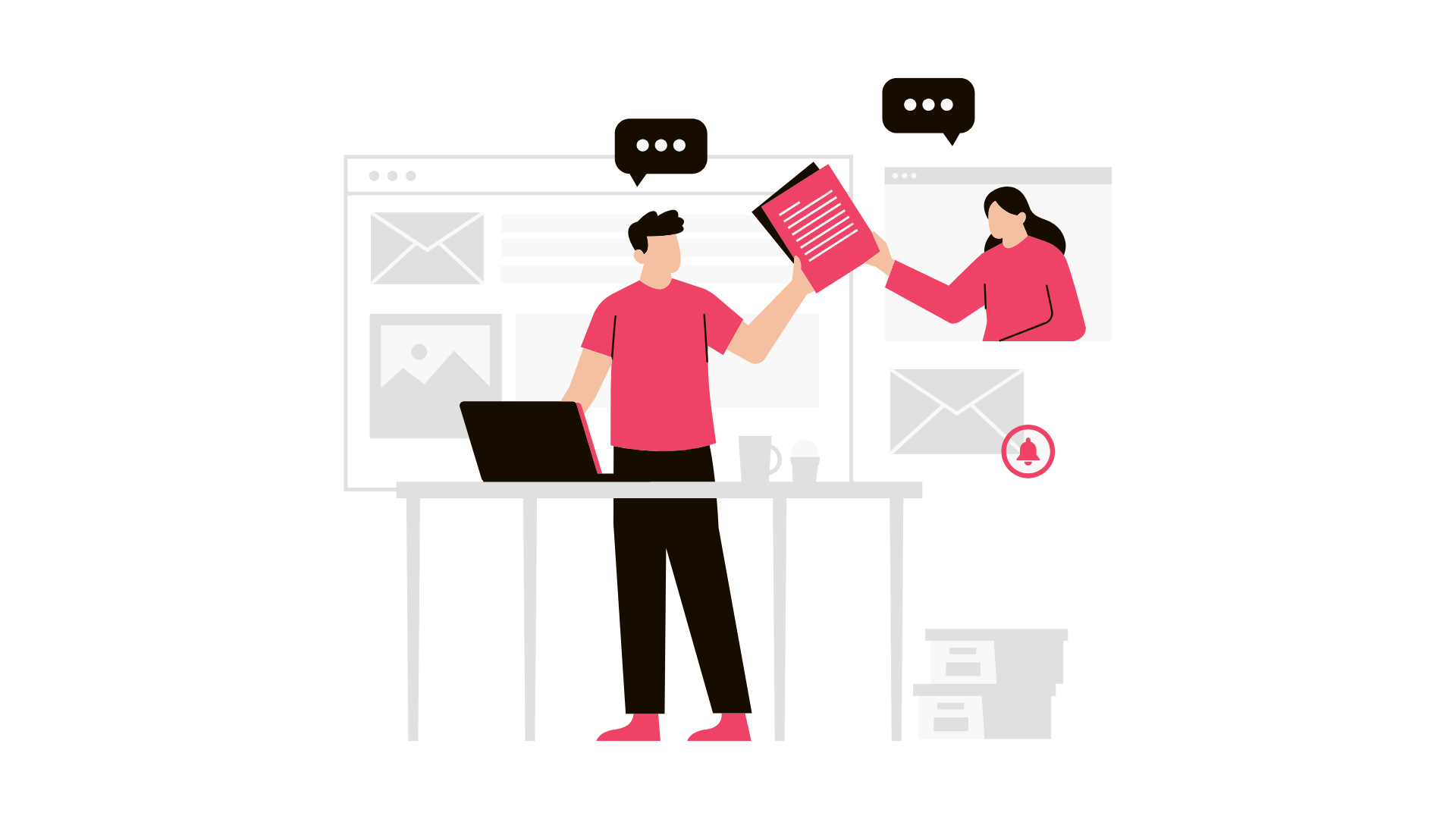Cold Email Response Rate: The Complete Guide 2025
Boost your cold email response rate in 2025! Personalize content, time emails right, implement strong CTAs, and A/B tests for success. Click to learn more.

Why do some cold emails seem to get immediate responses while others barely make an impact? In 2025, the cold emailing has changed—new technologies, fresh strategies, and shifting recipient expectations are reshaping what works. If you’re aiming to stay ahead of the curve in your outreach efforts, it’s crucial to understand the trends driving success this year.
In this blog, we’ll explore the cold email response rate and share tips to ensure your emails don’t just get opened, but also generate meaningful responses.
What Is Cold Email Response Rate?
The cold email response rate—also known as the reply rate—measures the percentage of recipients who reply to your unsolicited emails. It's a vital metric indicating the effectiveness of your outreach campaigns. A higher response rate signifies engaging content and a well-targeted audience, while a lower rate suggests the need for adjustments in your approach.
To better understand the effectiveness of your cold email campaigns, it’s important to know what constitutes a good, average, or bad response rate. Here's a breakdown of these key benchmarks.
Cold Email Response Rates: What’s Good, Average, and Bad
What is a Good Cold Email Response Rate?
A good cold email response rate typically ranges between 15% to 30%. This indicates that your message is relevant, well-targeted, and engaging enough to get attention.
Achieving this response rate suggests that your subject lines and email content resonate with the recipients, and your cold email outreach is effective.
What is an Average Cold Email Response Rate?
The average cold email response rate is generally around 5% to 10%. This is typical for most outreach campaigns, where some recipients may show interest but many ignore or delete the message.
If you're within this range, it means your campaign is average, and there may be room to fine-tune targeting or messaging to improve engagement.
What is a Bad Cold Email Response Rate?
A bad cold email response rate is anything below 1%. If you're seeing rates this low, it often signals issues with targeting, messaging, or email deliverability.
In such cases, reevaluating your email strategy and ensuring that you're reaching the right audience with a compelling message can help improve results.
To boost your engagement and drive better results, it's important to recognize what affects your response rate. Let’s explore the key factors that play a role.
5 Factors that Influence Your Response Rate
Several factors can impact your response rate, influencing how well your outreach efforts perform. By understanding these key elements, you can improve your chances of getting a reply.
- Timing: The timing of your outreach plays a crucial role. Reaching out at the right moment, when your audience is most likely to engage, can significantly boost your response rate.
- Personalization: Tailoring your message to the recipient’s specific needs or interests helps build a connection and increases the likelihood of a response.
- Clarity of Message: A clear and concise message makes it easier for your audience to understand your intent and take action, leading to higher response rates.
- Call to Action (CTA): A strong, clear CTA guides the recipient on what to do next, increasing the chances of them responding or engaging with your message.
- Follow-Up Strategy: Consistent, polite follow-ups can remind recipients to respond, especially when they may have missed your initial message. A well-timed follow-up strategy can significantly improve your response rate.
Let's now delve into actionable tips to enhance your outreach effectiveness and boost engagement.
10 Best Practices to Improve Your Cold Email Response Rate
To enhance your cold email response rate, consider implementing the following strategies:
- Personalize Your Emails: Tailor each message to the recipient by using their name, mentioning their company, and referencing specific details relevant to them. This approach demonstrates genuine interest and increases engagement.
Craft Compelling Subject Lines: Your subject line should be concise, clear, and intriguing. Personalizing it by including the recipient's name or company can significantly boost open rates. Avoid using generic or sales-oriented language that might trigger spam filters.
- Keep Your Emails Concise and Focused: Respect the recipient's time by delivering a clear and concise message.Useshort paragraphs, bullet points, and bold text to highlight key information, making the email easy to scan.
- Include a Clear Call to Action (CTA): Clearly define the desired action you want the recipient to take, such as scheduling a call or replying to your email. A single, focused CTA increases the likelihood of a response.
- Optimize Email Timing: Send your emails at times when recipients are more likely to engage. Studies suggest that emails sent on Tuesday mornings or Wednesday afternoons tend to have higher open and response rates.
- Demonstrate Credibility and Authority: Highlight your expertise by mentioning relevant achievements, sharing case studies, or providing testimonials. This builds trust and reassures the recipient of your professionalism.
- Ensure Mobile-Friendliness: With many professionals reading emails on mobile devices, it's crucial to use a simple layout, legible fonts, and avoid large images that may not render well on smaller screens.
- Follow Up Strategically: If you don't receive a response, send a polite follow-up email after a few days. Keep it concise, reiterate the value you offer, and include a clear CTA. Be respectful and avoid being overly persistent.
- Continuously Test and Refine Your Approach: Use A/B testing to experiment with different subject lines, email content, and sending times. Analyze the results to determine what resonates best with your audience and adjust your strategy accordingly.
- Check for Grammar Mistakes and Typos: Ensure your emails are free from grammar mistakes and typos. Poorly written emails can damage your credibility and make recipients less likely to respond, so always proofread your messages before sending.
The future of cold emailing lies in combining smarter tools with recipient-centric strategies to improve cold email response rates and foster genuine connections.
How Alisha Helps Improve Your Cold Email Response Rates
Alisha, the AI-powered Sales Development Representative from Floworks, is designed to optimize cold email outreach and boost response rates. Here’s how Alisha can help:
- Hyper-Personalized Emails: Alisha uses AI to automatically create tailored emails for each prospect, increasing engagement by making emails feel personal and relevant.
- Multi-Channel Outreach: It manages outreach through both email and LinkedIn, ensuring that your message reaches prospects on the platforms they use most.
- Automated Objection Handling: Alisha handles common objections and queries in real-time with AI-driven responses, keeping prospects engaged and reducing drop-offs.
- Seamless Scheduling: Integrated with your calendar, Alisha automatically schedules meetings with prospects, eliminating the back-and-forth of finding a suitable time.
- Consistent Follow-Ups: Alisha automates follow-up emails based on prospect engagement, ensuring no lead is neglected and improving your chances of a response.
- CRM Sync: It syncs with your CRM to keep your outreach activities and prospect interactions up-to-date, ensuring smooth sales processes and better tracking.
By automating key aspects of the cold email process, Alisha helps you scale outreach while maintaining high engagement, ultimately improving your response rates.
Conclusion
In 2025, cold emailing presents both challenges and opportunities. With low response rates and evolving expectations, it’s essential to adapt your approach—prioritizing personalization, timing, and compelling content. By tracking your cold email response rate and comparing it to industry benchmarks, you can identify areas for improvement.
The key to success lies in refining your strategy and using the right tools, like Floworks' AI-driven tool Alisha, to enhance outreach and automate critical tasks. With the tool you can significantly improve your cold email response rates and build genuine connections with prospects.
FAQ
- What is a good conversion rate for a cold email?
A good conversion rate for a cold email typically falls between 2-5%, depending on the industry and audience. This rate reflects the percentage of recipients who take the desired action, such as scheduling a call or purchasing a product.
- How many cold emails does it take to get one client?
On average, it may take 50 to several hundred cold emails to land a single client, depending on factors like industry and offer quality. Targeted and well-crafted emails can reduce this number by ensuring you're reaching the right audience.
- What is a good bounce rate for cold email?
A good bounce rate for cold emails is under 2%. A higher bounce rate indicates problems with your email list, such as invalid or outdated addresses. Keeping your list clean and using tools to verify email addresses helps maintain a low bounce rate. A low bounce rate also protects your sender's reputation and improves deliverability.
- How many cold emails is too many?
Sending too many cold emails can lead to diminishing returns and potential spam complaints. Limiting your daily outreach to fifty new prospects and avoiding exceeding 100 total cold emails per day to maintain effectiveness and compliance is advisable.


